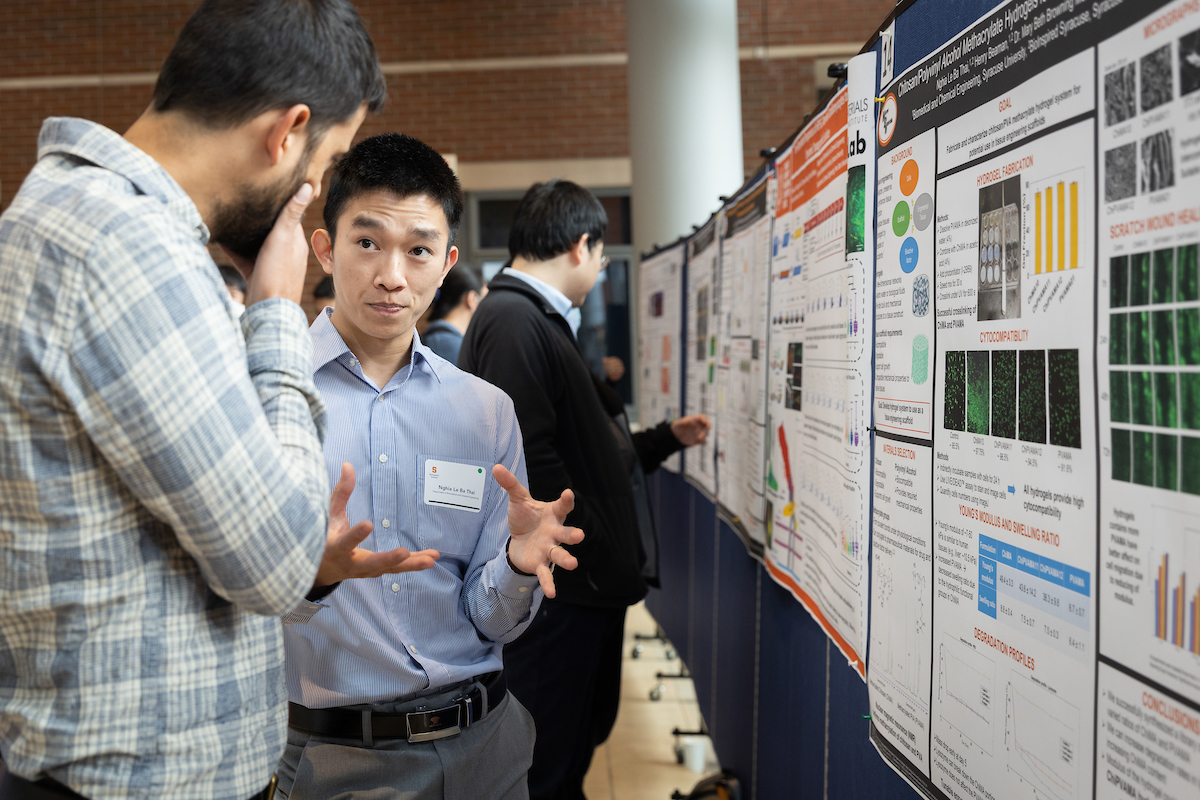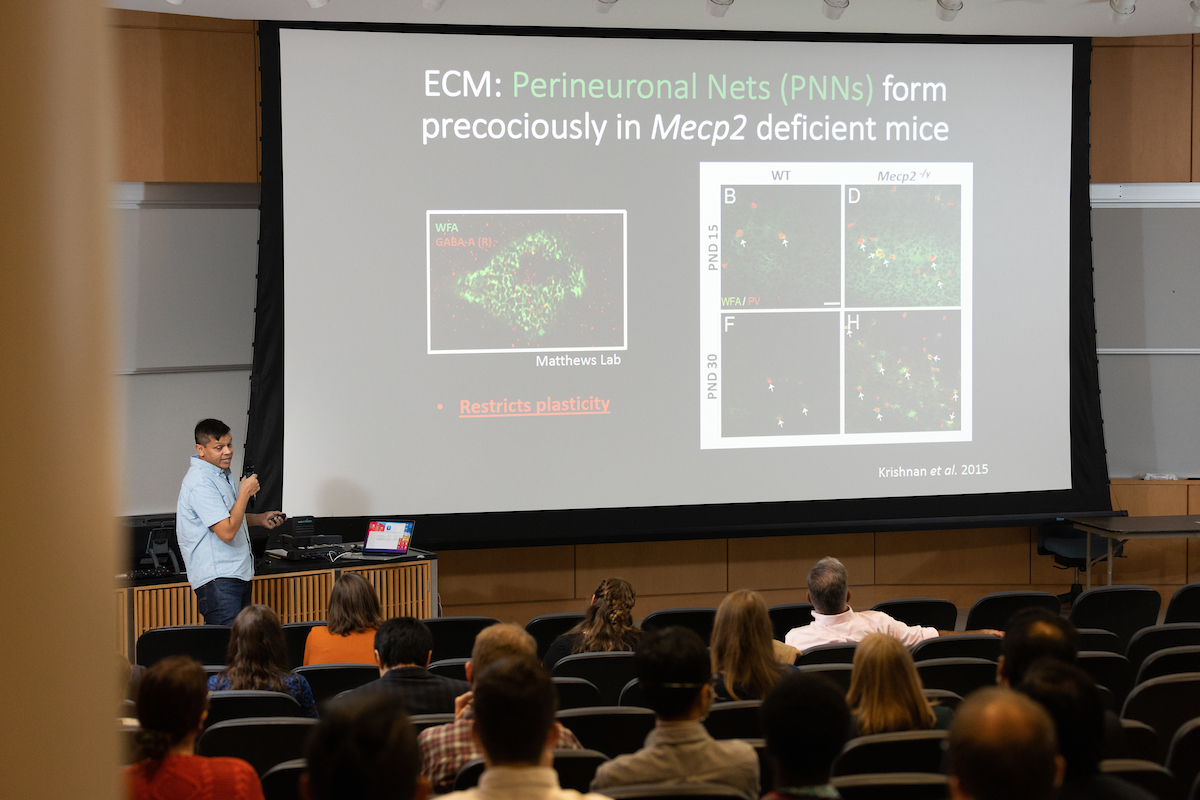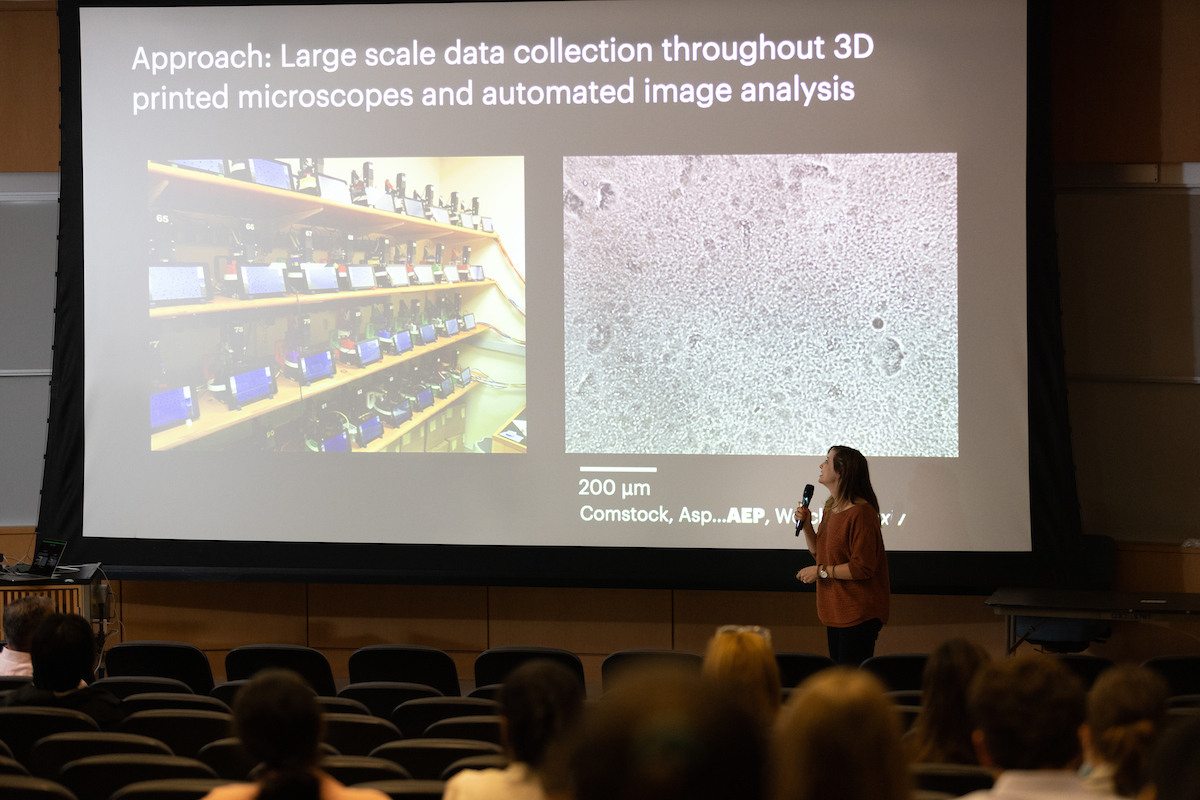Are you interested in knowing how living cells function? Do you wonder how scientists grow human tissues in the lab? Have you pondered how robots are programmed to work? If science piques your interest, delve into the topic at the BioInspired Institute research symposium Oct. 19 and 20 at the Life Sciences Complex.
During two days of talks, poster sessions and presentations, the symposium will showcase the work of undergraduate and graduate students, doctoral associates and faculty affiliated with the University-based research institute. The event is free and open to the public. Registration and a detailed event schedule are available online.
We sat down with James H. (Jay) Henderson, BioInspired Institute director and professor of biomedical and chemical engineering in the College of Engineering and Computer Science, to learn more about the projects and activities that will be featured at the symposium.
What is your main goal for the symposium?
Our goal is to share the amazing and inspiring achievements of our BioInspired researchers, celebrate noteworthy accomplishments and help the University community learn more about the world-renowned, leading-edge scientists working in the diverse fields that BioInspired researchers represent.
For researchers affiliated with the institute, the symposium provides a venue to discover and identify potential collaborative opportunities across campus and “The Hill” (our “shorthand” for collaborations involving Syracuse University, SUNY Upstate Medical University and SUNY School of Environmental Science and Forestry). For our graduate and postdoc trainees—the real heart of the research endeavor—this event lets them present their work to the University community.
What kinds of research projects will be presented?
Institute members work on living and material systems. Their projects explore particular molecules, cells and tissues to better understand how humans develop, age, suffer injuries and heal from them; the development of new materials and approaches for growing or printing tissues and organs to study, repair or replace injured or diseased tissues; and many other topics in the fields of biology, biomedical and chemical engineering, chemistry, civil and environmental engineering, mechanical and aerospace engineering and physics.
Our researchers also study diseases like cancer, asthma and Alzheimer’s; infections and biofilms; tissues and organs on a chip; material folding and origami; animal behavior; robotics; and viruses.

Students took part in poster sessions at the 2022 Bioinspired Symposium in the atrium of the Life Sciences Complex. (Photo by Angela Ryan)
What special activities are planned?
In addition to talks by our institute researchers, the annual Stevenson Biomaterials Lecture with University of Wisconsin cell science professor Sean Palecek will be incorporated this year. Palacek’s lab works with human pluripotent stem cells that self-renew and can differentiate into any type of cell found in adults.
Poster sessions are scheduled for both days, with prizes awarded for the three best posters and a prize each for the project with the best commercialization potential and the most promising societal impact. In addition, the Stevenson awards will recognize the two best posters in the field of biomaterials. Two awards will honor the best trainee lightning talks.

A student researcher presents an overview of his lab research to BioInspired 2022 attendees. (Photo by Angela Ryan)
Also exciting is “Bio-Art: The Synergy of Science and Art,” presented by Heidi Hehnly, associate director of the institute, and Boryana Dragoeva (Rossa), associate professor of art video in the College of Visual and Performing Arts. Their presentation brings art and science together to spark interdisciplinary collaboration and broaden perspectives about science, humanity and the interface of those arenas.
I’m also pleased that the symposium comes shortly after the founding director, M. Lisa Manning, William R. Kenan, Jr. Professor of Physics, concluded her directorship and thus gives the institute community an opportunity to celebrate and thank her for her visionary leadership in establishing the institute.
How is this second symposium different from last year’s?
Fundamental and translational research—which help us understand how things work and apply that understanding to achieve goals of societal importance—were highlighted last year and will be showcased again. New is a focus on the institute’s impact on research, education, workforce development and transdisciplinary collaboration with other campus units.
Research teams will present their science and also illustrate the education and outreach projects they’re leading and the widespread impact of those projects. Four of the five Syracuse University faculty members who received 2023 National Science Foundation CAREER awards are affiliated with the institute and will be among the presenters.
How does an event like this improve the campus and local community’s understanding of the work happening in University labs and other research spaces?
It’s one of many ways the institute supports dialogue between scientists and the public. It is essential that researchers convey the value of their work to each other and to the public as well, because public support is critical to scientists’ ability to do their jobs.

One of BioInspired’s faculty affiliates, NSF Career Award recipient Alison Patteson, presents a research talk. (Photo by Angela Ryan)
Science should be accessible, and this event does that. The work of BioInspired members is making a direct difference in the community and the world. Attendees will be able to see something new, learn something new and maybe meet someone new with whom to pursue a new collaboration. We particularly hope that undergraduates who aren’t yet involved in research will use this as an opportunity to learn not just about science but also about connecting to a lab and beginning their own research journey.
By: Diane Stirling
